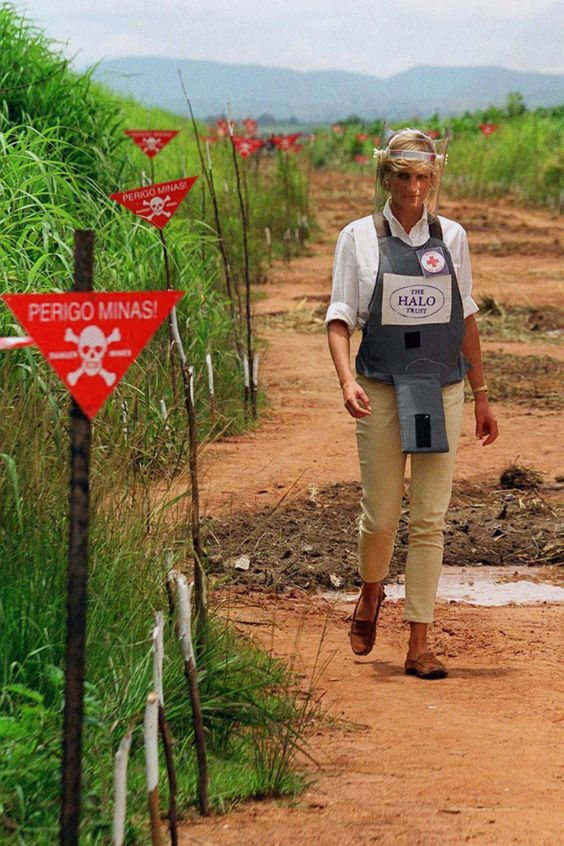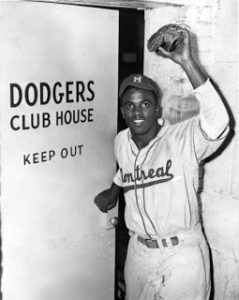Picture a princess. What image comes to your mind? Something out of a Disney movie, right? Carriages, designer dresses, star-studded balls, and monumental weddings are some of the aspects that depict the mainstream image of royalty. Now picture a princess…in a war zone. In early 1997, Princess Diana of Wales found herself standing beneath the pungent Angolan sun, away from the luxuries and gala events, where she cast off her royal attire for protective body armor and a visor. Princess Diana of Wales shed a momentous light on one of the most unnoticed atrocities of the African continent: landmines. That single action of hers, on that day, still resonates for us today, long after her untimely death.
Darkness had fallen on the lives of many innocent African communities. As disputes between villages turned into wars, public areas were replete with tragedy and death. In the mid-1990’s, three-dollar weapons called landmines were terrorizing the innocent—claiming twelve thousand civilian lives and causing the highest number of amputees in the world. Landmines are placed during these armed disputes, concealed underground to destroy or disable enemy targets.1 Although the armed combats in Angola had ended, the war “debris” continued to threaten people’s safety. People were dying regularly from leftover landmines, but few outside Angola knew anything about them. These mines would remain “live” for years, even decades, waiting for unsuspecting victims, as per their design, causing unimaginable suffering and pain.2

The African people were in desperate need of a solution. They needed a defender. Their cry for help was heard, reaching the gates of Kensington Palace. It was none other than Princess Diana—keen philanthropist and self-proclaimed Queen of Hearts—whose life purpose had become to shed a humane light on controversial issues such as AIDS and homelessness. “I’d read the statistics that Angola has the highest percentage of amputees anywhere in the world. That one person in every 333 had lost a limb, most of them through land mine explosion.”3 The moment Princess Diana became aware of this neglected tragedy, she knew exactly what she needed to do: take immediate action. “I have all this media interest, so let’s take it somewhere where they can be positive and embrace a situation which is distressing like this.”3 In early January 1997, she flew to Angola along with the Red Cross and a BBC camera crew.
A fearless Diana put herself in the midst of one of the most dangerous places in the world, thousands of miles away from the royal guard, protected solely by a riot helmet and a flak jacket given to her. Accompanied by local anti-landmine activists, she was taken to see a land-mine clearing operation in Huambo, central Angola.5 This was a royal, who spent a large part of her life in luxurious settings being served by others, who was personally stepping into filthy fields to deactivate mines, serving those whose lives were shattered by the deadly weapons. As she pushed the button to detonate a single mine, she uttered the words “One down, 17 million to go.”6

After the cameras stopped rolling, Diana didn’t. The fight to ban antipersonnel landmines became a personal crusade, one that would fill the last year of her life.7 She made this clear in the last speech she ever delivered, stating, “The more expeditiously we can end this plague on earth caused by the landmine, the more readily can we set about the constructive tasks to which so many give their hand in the cause of humanity.”8 This public light shed by Diana brought nothing but success, influencing countries to come together to pledge millions of dollars to tackle the destruction caused by landmines, as well as bringing 122 governments from around the world to contribute to the passage of the Ottawa Mine Treaty. Landmines are still an issue of global concern, but Diana remains the most influential face of anti-landmine activism.
- Isebill V. Gruhn, “Land Mines: An African Tragedy,” Journal of Modern African Studies, no. 4 (December 1996): 688. ↵
- Stuart Maslen, Mine Action after Diana: Progress in the Struggle Against Landmines (London: Pluto Press, 2004), 15. ↵
- Heart of the Matter: Diary of a Princess, directed by Karina Brennan (UK: BBC, 1997). ↵
- Heart of the Matter: Diary of a Princess, directed by Karina Brennan (UK: BBC, 1997). ↵
- Encyclopedia of Espionage, Intelligence and Security, 2004, s.v. “Unexploded Ordnance and Mines,” by Mike Lambert. ↵
- Johnna Rizzo, “How Princess Diana Crippled The Case For Land Mines,” Newsweek, Oct. 24, 2015. ↵
- Johnna Rizzo, “How Princess Diana Crippled The Case For Land Mines,” Newsweek, Oct. 24, 2015. ↵
- Diana, Princess of Wales, “Responding To Landmines: A Modern Tragedy And It’s Consequences” (keynote address, Mines Advisory Group and the Landmine Survivors Network, London, June 12, 1997). ↵




82 comments
Troy Leonard
reading this article it was very laid out and had great information about the topic. when I read that how 1 in every 333 people in Angola lost a limb due to an explosion. she had put her self in the most dangerous places in the world all away from her normal life shows how good of a person she really is and how big her heart Is.
Dayna Valdez
It was incredibly sad to read and learn about how so many people lose their lives working in the minefield. It’s so shocking to read of a princess walk across a minefield. It takes so much courage to do so, however, Princess Diana seemed to have done it like nothing. Her impact on the situation and determination to help so many people was incredible. The article was truly inspiring, when thinking of a princess, I really picture someone with a fancy dress and crown, but because she wanted change, she took action and gave me a different and better image of what a princess can be.
Jesica Rivera
The essence of what Princess Diana stood for is capture very well in this article. From the start she became someone to provide people with a silver linings in desperate times. She broke glass ceilings in the monarchy when she deemed fit and she was loved by everyone for it. It is nice to see her legacy of compassion and love is still carried on by the people she help bring together in a time of need
Mariah Cavanaugh
I have always looked up to Princess Diana as a shining example of what we should all strive to be. As humans we must care for one another and lend a hand when needed. Before reading your article, I was unaware of the land mind crisis that African’s were facing. I can’t imagine walking down the street only to have my leg blown off. I hope that the fight to rid Africa of landmines did not die with Princess Diana
Belene Cuellar
I am so proud of Princess Diana and her hardworking spirit that led her to help others in their time of need. I never thought that a royal would ever risk their lives to bring good to those in need. Her humble character was one of the many things that made Princess Diana a role model to all. She is an example of the type of person everyone should strive to be. The author did a good job in capturing all of Princess Diana’s achievements and her goals for a better future.
Jasmine Martinez
I found this article so interesting. It takes a lot of bravery to actually have the guts to walk across that field, but she did it for the greater good. She wanted to bring attention and she used her platform to do so. It was a really good article, especially the introduction with the mental image and then the sudden change and insight of what was really going on.
Edith De Loera
I have always believed Princess Diana to be more than just a royal. She took immediate action when it came to human rights and helping the less fortunate. I have heard of many cases where her passion assisted in making a change in the world, but had yet to hear about this event. Princess Diana navigated a live minefield, being aware of the consequences, and did not think twice about it. She seriously used her power for good and influenced the lives of many. She was definitely a great role model. Great job writing this article and depicting one of the many impacts the princess made.
Megan Barnett
It was truly inspiring to read about the positive impact that Princess Diana made in anti-landmine activism. I liked how the article stayed focused on the topic, including the pictures, but from the beginning I was curious as to how she died at a young age. I think this intrigued me to continue reading, however when I found out the answer wasn’t there I was bit disappointed.
Lauryn Hyde
I found this article very interesting, I had heard a little bit about Princess Diana but it was mostly surrounding her death. I had never heard of her walking through the land mine field. I have a lot of respect for Princess Diana for using her name and media support to get Africa the help they needed and taking initiative to help.
Aaiyanna Johnson
I have always loved Princess Diana, and her audacity to go against societal norms. This article made me appreciate her even more. This article showed me the graceful, yet determined Princess Diana. One who was willing to help anyone before herself. I loved that she used her platform for positive media, for shedding a light on the tragedies of others. Her empathy was truly a gift.